This
page summarizes some of Ray Carney's artistic discoveries. To
read an account of Ray Carney’s career and publications and
about his other achievements as a scholar and intellectual, click
here to go to the “About Ray Carney” pages.
Two
of Ray Carney's most important recent film discoveries are finding the
long-lost first version of John Cassavetes' Shadows and a long
print of Faces. These discoveries are mentioned below, but to
read more about them, click on this
link for the Shadows story and this
link for the Faces one.
To
read a chronological listing of events between 1979 and the present connected
with Ray Carney's search for, discovery of, and presentation of new material
by or about John Cassavetes, including a chronological listing of the
attempts of Gena Rowlands's and Al Ruban's to deny or suppress Prof. Carney's
finds, click
here.
Click
here for best printing of text
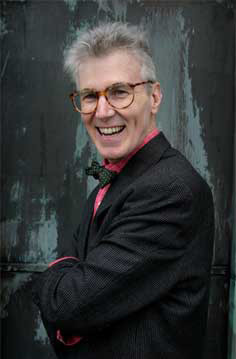 |
Ray Carney at the Rotterdam Film Festival
Photo by Anke Teunlssen (Amsterdam) / January 2004 |
Ray
Carney has made a name for himself as the discoverer, presenter, and popularizer
of dozens of new, unknown, or lost works of art. There are too many instances
to cite more than a few representative examples. As a graduate student,
he discovered a previously unknown source for the first five books of
William Wordsworth's poetic masterpiece, The Prelude in Reverend
Joseph Simpson's Science Revived, or The Vision of Alfred,
a forgotten Augustan epic. When he curated the Beat show for the Whitney
Museum of American Art, Prof. Carney discovered and screened a major new
work that had not been seen in more than forty years: Frank Paine's Motion
Picture, a film which had never been written about before. (Click
here for more information about that work.) He has discovered, introduced
early screenings of, or brought to public attention previously unknown
or neglected works by many American independent filmmakers, works which
are now recognized and appreciated because of his championing of them
– including films by Morris Engel, Lionel Rogosin, John Korty, Barbara
Loden, Robert Kramer, Gordon Erikson, Charles Burnett, Mark Rappaport,
and Caveh Zahedi.
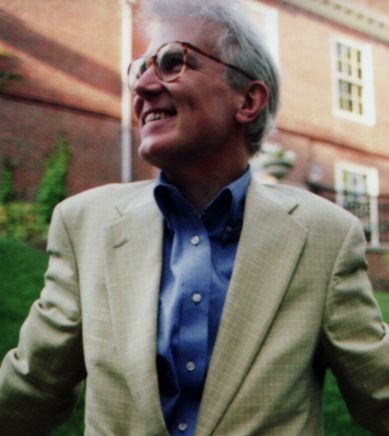 |
| Photo of Ray Carney by Randy Walker, 2007 |
Prof. Carney's writing on
John Cassavetes, particularly in his Cassavetes on Cassavetes and Shadows books
(click
here for information about the first book and here for
information about the second) has brought to light hundreds of previously
unknown facts and events about the life of the filmmaker and completely
changed the understanding of the production history of his work. Prof.
Carney is the first writer to have told the complete behind-the-scenes
stories of the making of all of Cassavetes' films. His greatest intellectual
coup was to recount the previously unknown story of the production
history of the two versions of Shadows. To the surprise of the
world, he revealed that—in direct contradiction of the statement
that ends the film about its being "improvised"—Cassavetes
employed screenwriter Robert Alan Aurthur to "story doctor" the
second version and write a series of scenes to be inserted into the
movie. Many of these facts were revealed to Carney by Cassavetes himself
in a "Rosebud" conversation shortly before his death as well
as through interviews with the actors and crew members of the various
works in the final years of their lives.
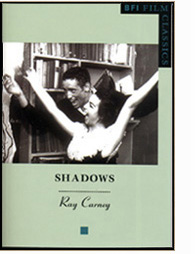 With
the assistance of the Museum of Television and Radio and, in many cases,
in collaboration with Jane Klain, Manager of Research Services, Prof.
Carney has also discovered and revived many unknown or forgotten early
television works in which Cassavetes appeared, including his virtuosic
one-man performance piece on Quest's Flip Side (which was never
broadcast in U.S.), his acting and directing work in Johnny Staccato
(including the remarkable Double Feature episode where Cassavetes
plays two roles at once) and The Lloyd Bridges Show, his zany,
over-the-top performance in S. Lee Pogostin's "Free of Charge,"
and his acting in many other otherwise lost or forgotten television series
like Burke's Law, Bob Hope Presents the Chrysler Theater,
and Columbo. Prof. Carney has organized and presented the first
public screenings of many of these works in recent years as well as screenings
of other works by Cassavetes that have never been broadcast on television
or released in theaters. For film festivals and archives, he has put together
a screening event of his favorite pieces, which he calls "The Unknown
John Cassavetes," and which has drawn rave reviews and standing-room-only
crowds. (Click
here to learn about an upcoming series of screenings of some of these
works curated by Allen Glover at the Museum of Television and Radio. And
click
here to read more of Prof. Carney's discussion of Cassavetes' acting
work in television and film and some of the screening events Prof. Carney
has personally organized and presented.) The revised edition of his Cassavetes
on Cassavetes has the most complete discussion of Cassavetes' television
work ever assembled. (Click
here to find out how to obtain this book.) With
the assistance of the Museum of Television and Radio and, in many cases,
in collaboration with Jane Klain, Manager of Research Services, Prof.
Carney has also discovered and revived many unknown or forgotten early
television works in which Cassavetes appeared, including his virtuosic
one-man performance piece on Quest's Flip Side (which was never
broadcast in U.S.), his acting and directing work in Johnny Staccato
(including the remarkable Double Feature episode where Cassavetes
plays two roles at once) and The Lloyd Bridges Show, his zany,
over-the-top performance in S. Lee Pogostin's "Free of Charge,"
and his acting in many other otherwise lost or forgotten television series
like Burke's Law, Bob Hope Presents the Chrysler Theater,
and Columbo. Prof. Carney has organized and presented the first
public screenings of many of these works in recent years as well as screenings
of other works by Cassavetes that have never been broadcast on television
or released in theaters. For film festivals and archives, he has put together
a screening event of his favorite pieces, which he calls "The Unknown
John Cassavetes," and which has drawn rave reviews and standing-room-only
crowds. (Click
here to learn about an upcoming series of screenings of some of these
works curated by Allen Glover at the Museum of Television and Radio. And
click
here to read more of Prof. Carney's discussion of Cassavetes' acting
work in television and film and some of the screening events Prof. Carney
has personally organized and presented.) The revised edition of his Cassavetes
on Cassavetes has the most complete discussion of Cassavetes' television
work ever assembled. (Click
here to find out how to obtain this book.)
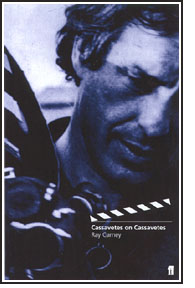 Most
recently, Ray Carney made two of the most important film discoveries of
the past one hundred years. He located one of the long prints of Cassavetes'
Faces and two years later, after seventeen years of searching,
in November 2003 found the legendary lost first version of Cassavetes'
Shadows, a completely different film from the known version –
in effect adding a new first film to Cassavetes' body of work and an important
new work to the canon of American independent film. In January 2004, he
unveiled the discovery at two standing-room only screenings at the Rotterdam
International Film Festival in the Netherlands. The screenings attracted
critics, reviewers, and scholars from around the world, and the discovery
has been written up in more than 100 newspapers and magazines from Japan
to Italy to the U.K. (although very little has been written about it in
the U.S. where Hollywood values and interests prevail even in so-called
serious cinematic writing). Prof. Carney has been besieged with requests
to show the print in England, Europe, Asia, and the Far East. As part
of the announcement of the discovery, he published a long piece in the
London Guardian describing the quest and was interviewed by more than
20 European publications. For more information about each of these major
cinematic discoveries, click on this
link for Faces
and this
link for Shadows. Most
recently, Ray Carney made two of the most important film discoveries of
the past one hundred years. He located one of the long prints of Cassavetes'
Faces and two years later, after seventeen years of searching,
in November 2003 found the legendary lost first version of Cassavetes'
Shadows, a completely different film from the known version –
in effect adding a new first film to Cassavetes' body of work and an important
new work to the canon of American independent film. In January 2004, he
unveiled the discovery at two standing-room only screenings at the Rotterdam
International Film Festival in the Netherlands. The screenings attracted
critics, reviewers, and scholars from around the world, and the discovery
has been written up in more than 100 newspapers and magazines from Japan
to Italy to the U.K. (although very little has been written about it in
the U.S. where Hollywood values and interests prevail even in so-called
serious cinematic writing). Prof. Carney has been besieged with requests
to show the print in England, Europe, Asia, and the Far East. As part
of the announcement of the discovery, he published a long piece in the
London Guardian describing the quest and was interviewed by more than
20 European publications. For more information about each of these major
cinematic discoveries, click on this
link for Faces
and this
link for Shadows.
Prof. Carney recently made
yet another major Cassavetes cinematic discovery that is still under
wraps. It will be announced to the world in a few
months. (You read it here first. This is the only notice that is being
published anywhere – your reward for reading this page! Stay tuned
for more information when it is released. It will appear here.)
Prof. Carney is currently completing two biographical studies that will revolutionize the understanding of Cassavetes' films and working methods: John Cassavetes on Art and Life and John Cassavetes: What is Art?, a critical/intellectual biography exploring the relation of Cassavetes' art and life. Click here to read a brief statement about the intellectual biography, if you are interested.
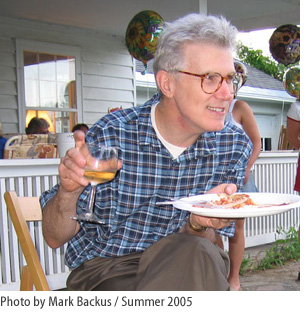 Contact
information: Contact
information:
Prof. Ray Carney
Department of Film and Television
College of Communication
640 Commonwealth Avenue
Boston University
Boston, MA 02215
Tel: 617-353-5976
E-mail: raycarney@usa.net
For a list of websites
with material by or about Ray Carney, click
here.
High-resolution JPG images of Prof. Carney
are available here..
This
page summarizes some of Ray Carney's artistic discoveries. To
read an account of Ray Carney’s career and publications and
about his other achievements as a scholar and intellectual, click
here to go to the “About Ray Carney” pages.
Two
of Ray Carney's most important recent film discoveries are finding the
long-lost first version of John Cassavetes' Shadows and a long
print of Faces. These discoveries are mentioned above, but to
read more about them, click on this
link for the Shadows story and this
link for the Faces one.
To
read a chronological listing of events between 1979 and the present connected
with Ray Carney's search for, discovery of, and presentation of new material
by or about John Cassavetes, including a chronological listing of the
attempts of Gena Rowlands's and Al Ruban's to deny or suppress Prof. Carney's
finds, click
here. |










